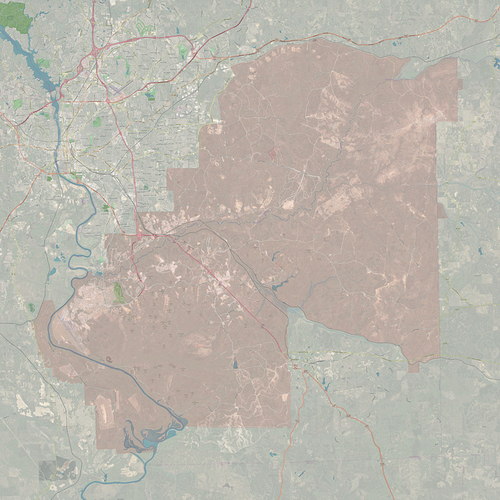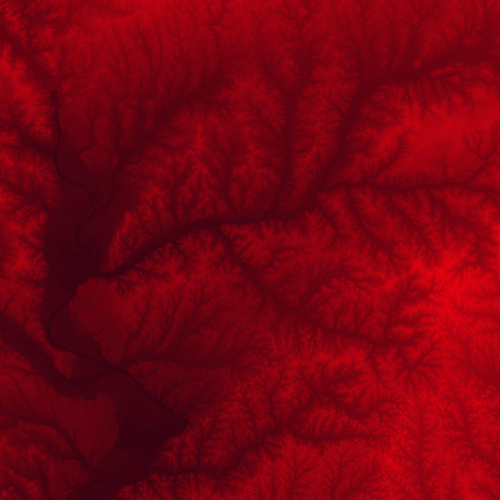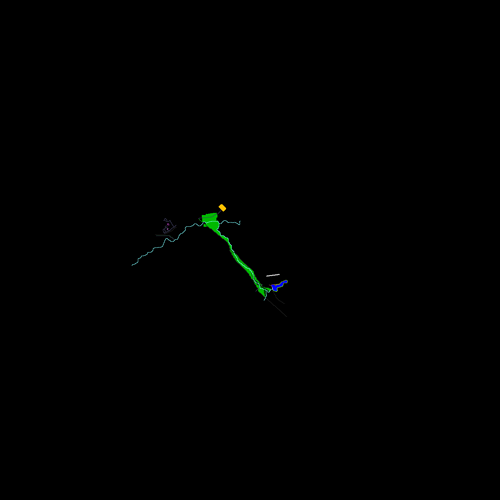Can we quote you on that?
Stuff like this is aesthetically great. And that’s about it. From a game design perspective, TOAW is completely incapable of portraying the historical case simply by putting the historical units in their historical places. I’d love to see the situation 10 turns in. The system simply can’t handle it.
As a creative work for the sake of aesthetics, like a painting, it’s impressive. As a game, it’s useless.
Has a historical research effort, which it’s what this is, by reading the forum thread and the author’s website, is face palming :)
Wow. That’s supposed to be a “small” scenario? I lost my first go at it in a tactical defeat with something like 100 soviet units killed.
Diego
I hacked together a little scheme to have an idea of the various types of scales (for the big games I know):
Battles Normandy (Tiller) - 1km hex?? - 30 min - 40 turns - 20 hours //
The Greatest Day (board) - 500m - 2 hours (8+1) - 64 turns - 8 days //
Moscow 42 (Tiller) - 1km - 2 hours - 576 turns - 2 months //
Atlantic Wall (board) - 1km - 8 hours - 234 turns - 2.5 months //
TOAW wip - 2.5km - half-week - 450 tuns - 4+ years // (early devel)
FITE2 - 5km - half-week - 450 turns - 4+ years // no AI (june 41 - oct 45)
Directive 21 - 10km - half-week - 405 turns - 4+ years // germ vs AI (june 41 - may 45)
Case Blue (board) - 8km - half-week - 178 turns - 1.5 years // (oct 41 - june 43)
WitE - 15km - week - 224 turns - 4+ years //
Directive 21 seems a popular TOAW scenario. It is slightly smaller than FITE, but it is meant to be played against the AI ONLY (Russian side). FITE2 is rigorously human player only, Directive 21 explicitly says not trying to play with another human because events will create problems. It’s AI mandatory.
The map is even slightly more complete:
We kind of need a decent computer game to fill the gap, 2-5km, at least half-week turns, the whole russian front. It would probably be more successful that Grigsby’s “War in Europe” myth. It would still be in a weird operational/strategic spot.
The gap is between Tiller’s game and FITE2.
It’s a big problem with Norm Kroger’s bottom up philosophy, isn’t it, though? Age of Rifles (which I’ve spent far too much time on over the years) can so easily be gamed to produce utterly unrealistic casualty figures - while it sort of works overall on the scale of day-long battle given how unpredictable battles are anyway, it breaks down on any operational scale so quickly.
All bottom up simulation is problematic and a misguided attempt at “historicity”, imho. I see the point of using simulation to figure out constraints when the simulation is focused on a single aspect and there are no real contemporary reliable models/accounts (Sabin’s ancient stuff).
Case in point, the website for the “research project” of the author of the 2.5km map linked above http://www.operationbarbarossa.net/ . The map is supposed to be a tool to test a “simulation” of Barbarossa to figure out what where the real determinants in the operation, versus the “narratives” of historians… He’s writing a series of 7 (?) books on the subject, the map and the analysis of the playtest is going to be the final book. Madness. Interesting madness, but madness nonetheless.
Also, one week for a WitE turn? It’s not that bad if you don’t AP.
Anyway, I see Unity of Command II is our next Tuesday…
A nice guide for Armored Brigade, written by a former member of the 1st Cavalry Division.
Also, the Steam Workshop is slowly filling up with more stuff. Remember, Armored Brigade only hit Steam last week.
Armored Brigade really hits the spot for me, I have to say. It’s so easy to mod that I’ve already put a few interesting units in (ADATS, the Challenger 2 Streetfighter prototype with a Brimstone launcher on top of the turret…), and I’m investigating what it would take to make a Fort Benning map.
It has two major advantages over Flashpoint Campaigns Red Storm, from where I sit: it runs on Linux, and it’s far enough down the beer-and-pretzels end of the spectrum that I can play a scenario or two without dedicating a whole evening to it.
Armored Brigade is a blend of Flashpoint Campaigns Red Storm with Close Combat. It’s a bit more “accessible” than the former, too. Flashpoint Campaigns is very boardgamey and feels more abstract, as you can’t zoom down on individual units; everything is just unit counters. In comparison, Armored Brigade feels like a miniatures wargame.
But, yeah, it’s really good. It’s regimental-level, late-Cold War warfare. It’s the game you always wanted if you grew up reading Red Storm Rising or Team Yankee.
Played the first Fulda Gap campaign map as USA - had a 3-1 AFV kill ratio and still only managed a draw!
I fired Armored Brigade up for the first time in ages last night while I was waiting for a download to finish. I remember now why I had trouble getting into it when it was new. The awkward way the map shows elevations makes it a chore for me to really “get” the battlefield, unlike with a Combat Mission type game, or even Flashpoint. I did figure out how to move a formation, but there’s a paucity of feedback in the interface to let you know that, yes, you have given a formation movement order rather than just ordered one unit. I set up TRPs, but how to actually use them was sort of opaque. Ok, I didn’t actually read the manual, so some of this is 100% on me, but the tips that pop up are only modestly helpful, and stuff like the TO&E listings are not graphically well laid out.
Still, I managed to kill some commies and get a feel for it enough to want to, ahem, read the manual and guides and maybe fiddle with it some more. I think it has potential to be really interesting for me, if I give it some effort.
Besides, at this rate, the next Flashpoint game, Southern Storm, won’t be out until 2030.
Pretty much my experience with the Finnish scenario.
Can’t somebody just bribe Gary Grigsby to rewrite Steel Panthers so it works on modern PCs properly?
(I know SPWW2 and the modern one sort of work, but Alt-Tabbing doesn’t and the scenario design is just excessive.)
The documentation is pretty poor anyway. The dashed circle when you place a TRP is the radius in which adjustments will happen faster. Outside of TRP range, they’re slower (much slower, depending on your choice of nation).
Top-down 2D maps and highly elevation-sensitive combat are a difficult pairing. (Command Ops is among my favorites, so it’s a problem I’m all too familiar with.) You can enable contour lines with one of the wee tiny buttons to the right of the minimap (I don’t recall offhand, but I think it looks like a contour line). Much more useful than that, in my experience, is the isometric view mode from the button on top of the minimap. Unfortunately, you can’t play the game from the isometric mode, but you can much more easily get a sense for the undulations of the map.
I might go make a suggestion on the Steam forums about borrowing a Command Ops innovation—the Command Ops LOS tool shows a bar graph of the terrain height relative to the reference point between it and the mouse, which is a handy shortcut.
My mapmaking exploration has turned into a mapmaking project. This is Fort Benning, along with the surrounding communities of Columbus, GA, Phenix City, AL, and to the southeast, Cusseta, GA.
Following the mapmaking tutorial helpfully provided by the developers, I downloaded QGIS and set to work. They recommended the Shuttle Radar Topography Mission dataset, whose 1-arcsecond/30-meter resolution is just about right for Armored Brigade’s 30m map cells, but it’s noisy—in particular, it’s a surface height map more than a terrain height map, so it includes trees. The USGS has a 10-meter survey dataset available which is just terrain, so I got two square degrees of that and chopped out the right part per the tutorial, to get the heightmap below, which is 42 kilometers on each edge at 30 meters per pixel.
The most notable feature is the Chattahoochee basin, which runs up the left side of the map. Fort Benning itself is heavily forested and features numerous small streams, rivers, and lakes, which make it an odd choice for an armor training school. Oh well. I didn’t put it there.
Anyway. On top of the heightmap, there’s a terrain definition map. Obviously, I have a good ways left to go, but you get the idea from this. Colors map to terrain types, on the same 30-meter scale as the heightmap. If you fiddle with a config file, you can put Armored Brigade into map editing mode, which gives you some help (square brushes of various sizes, a ‘draw line’ tool, a fill tool, and a palette of all the terrain types) in assembling the terrain bitmap.
I guess there are location labels, too, but a) happily, this is not a very heavily populated area of the world, and b) I’ll cross that bridge when I come to it.
Wow, cool stuff! I remember going to Columbus to visit my grandfather, on my mother’s side, who had been stationed there in WWII and settled their permanently. Went on base a few times but don’t really recall much.
So, um … I went and ordered that guy’s Barbarossa thesis because whatevs man, lemme check it out, I’m a sucker for this stuff. But then this happened.
Once you behold the Fully Integrated Land and Air Resource Model, there’s no telling what will happen.
I would love to know your thoughts on this.



